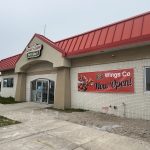No simple answers in academic R&D
How do you measure the economic benefits of investment in academic research? Can a university’s entrepreneurial research truly drive a local economy in the creation of new jobs and businesses?
Those were questions on the minds of academic and business leaders attending the first annual Milwaukee Regional Research (MRR) Forum luncheon Monday at the Crowne Plaza Hotel in Wauwatosa.
The MRR Forum was created a year ago for the purpose of informing the community on the progress of the newly-formed Clinical and Translational Science Institute (CTSI), a collaborative research initiative between Milwaukee academic research institutions and some of the area’s largest health care providers.
Involved in the CTSI are the Medical College of Wisconsin, Marquette University, University of Wisconsin-Milwaukee, Milwaukee School of Engineering, Froedtert Hospital, Children’s Hospital Health System of Wisconsin, the Zablocki VA Medical Center and the Blood Center of Wisconsin. The center’s focus is to bring together biomedical research from all those institutions and transform that research into ways that improve people’s lives.
In July, the National Institutes of Health gave $20 million to the Medical College to use toward the CTSI’s efforts in southeast Wisconsin. The college was one of only nine U.S. health research centers to receive this particular type of NIH funding this year.
So the topic of Monday’s luncheon — sponsored by the CTSI, the Public Policy Forum, the Whyte Hirschboeck Dudek Law Firm and the Wauwatosa Chamber of Commerce –examined the role collaborative research and public-private partnerships play in stimulating economic development.
At the end of the day, when a federal government institution like the NIH invests $20 million in academic research, how many businesses and jobs will spin off as a result? Will the economic benefits be enough to warrant the spending of public resources in the first place?
Moderated by Stephen Percy, acting dean of the UWM School of Public Health, panelists took on the topic with a lively discussion. And, just like scientific research goes sometimes, the panel produced no definitive answers.
Marc Levine, professor at the UWM Center of Economic Development, admonished those who promote research universities as “economic engines” of their communities. He citied his own study analyzing the relationship between academic research institutions and local economic development; after examining 55 major U.S. regions, Levine found “no meaningful” correlation between “entrepreneurial” academic research and growth in jobs and new businesses.
“We are overselling academic research dramatically if we think it will result directly in business start-ups,” said Levine, who’s been criticized by community leaders in the past for his wet blanket perspective.
Dan Steininger, a Milwaukee business leader and co-founder of the Successful Entrepreneur Investors (SEI) angel network and BizStarts Milwaukee Inc., noted that when combined with other factors, academic research could be a key component to local economic growth.
“Researchers do research, they aren’t business people,” Steininger said. As a result, he says their work has to be backed by some sort of “mentor system” like his BizStarts group — a nonprofit that helps match entrepreneurs with angel investors and venture capitalists to fund their business startups — in order to reap economic benefits.
Both Steininger and Wisconsin Technology Council President Tom Still noted that Wisconsin has long lagged other states in attracting venture capital –though the state is catching up in angel investment in early-stage businesses.
And while a single Milwaukee-area research institution can’t expect to be an economic driver on the same level as UW-Madison, which recently hit the $1 billion milestone in annual research expenditures, collectively the CTSI institutions “can provide the kind of platform that can make research and development go” in southeast Wisconsin, Still said.
In addition, the Milwaukee Regional Medical Center itself injected nearly $3 billion into the area’s economy in 2009 — and that’s nothing to dismiss. The MRMC’s members – which include the Medical College, Froedtert, Children’s Hospital, Curative Care Network and the BloodCenter of Wisconsin –employ more than 13,500 people and attract over $170 million in research funding.
In today’s political climate where divisiveness and derision are common standards of practice, it should be celebrated that a group of competitive institutions are cooperating on scientific research that ultimately will improve the health and well-being of society.




















